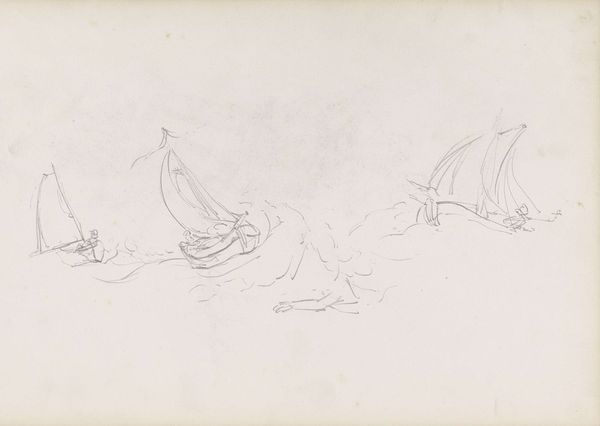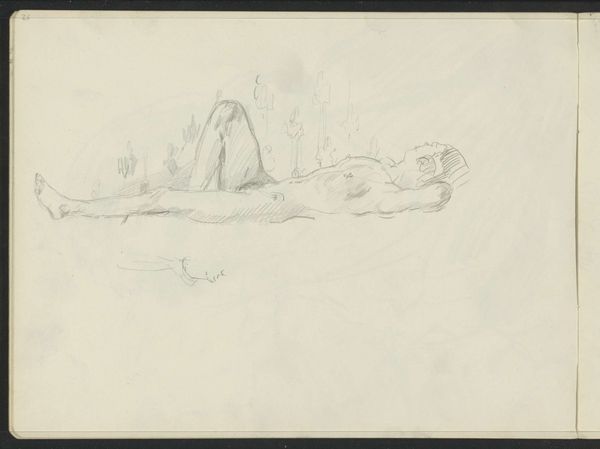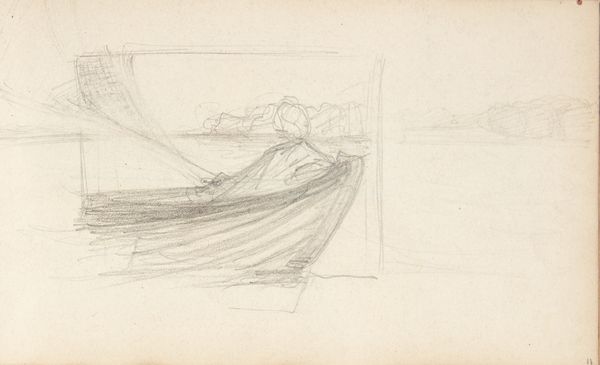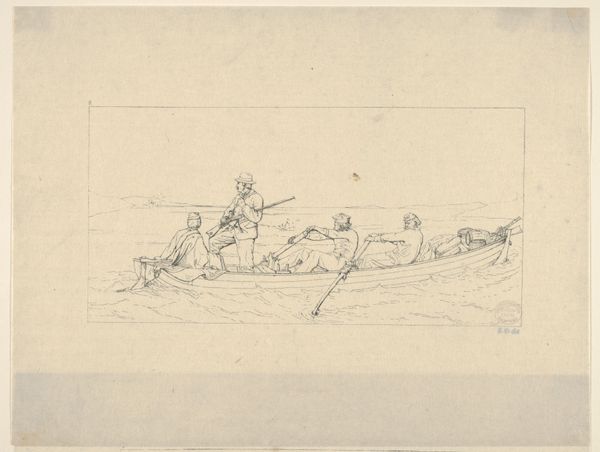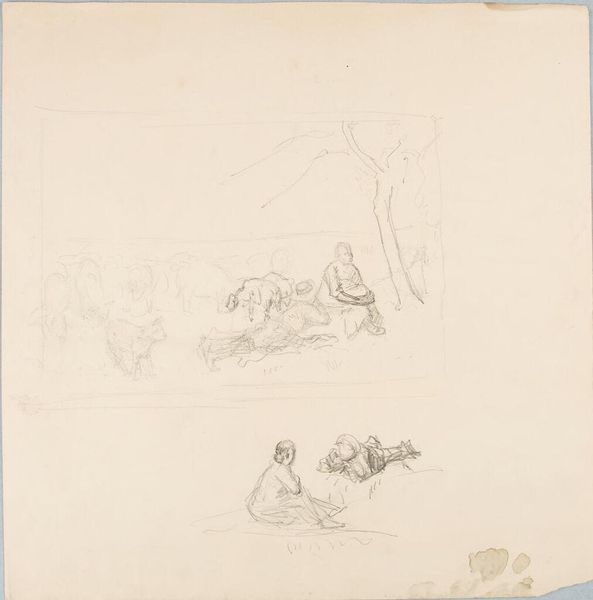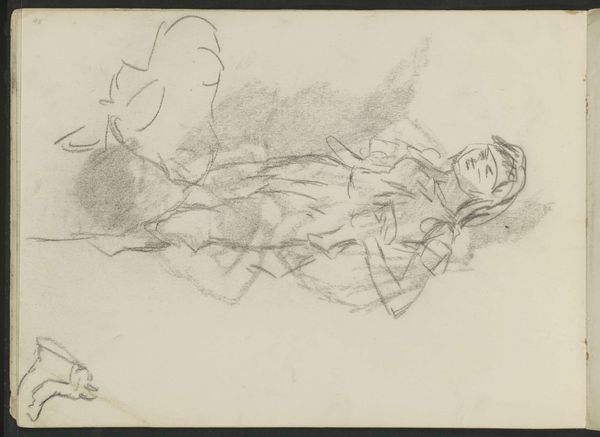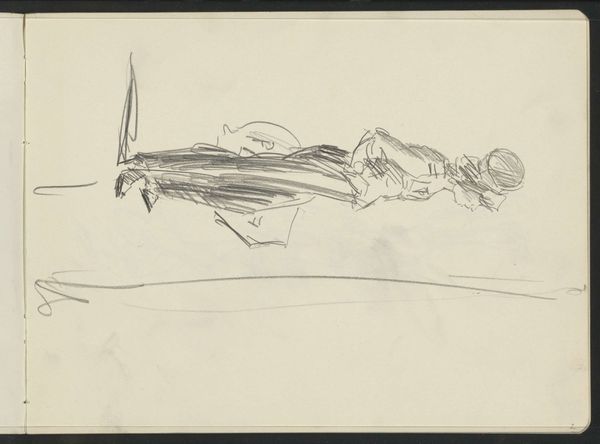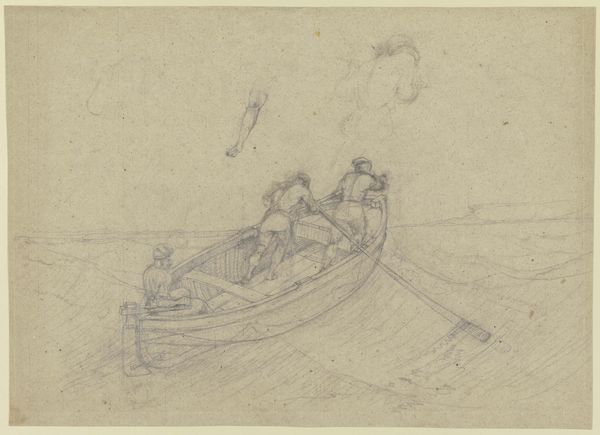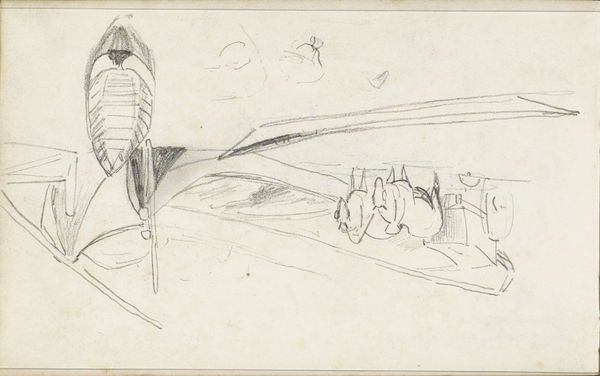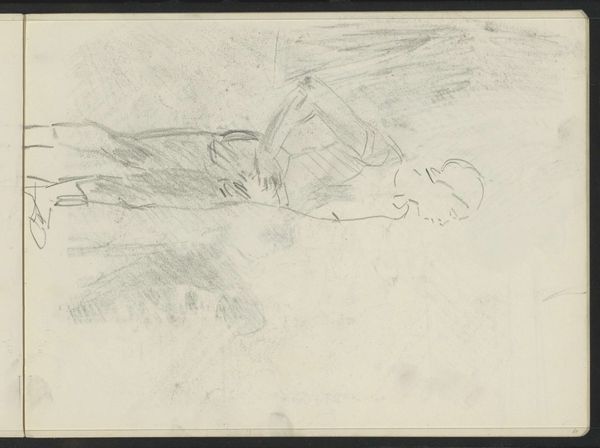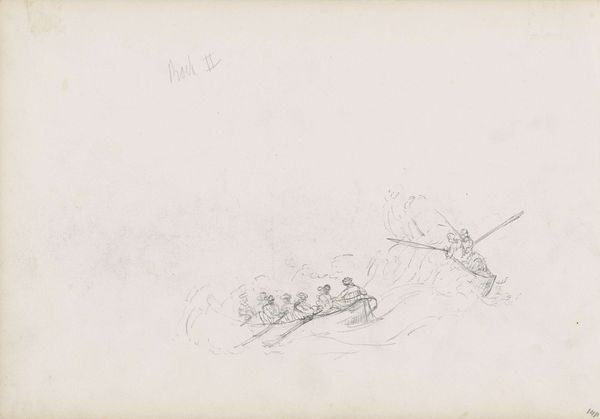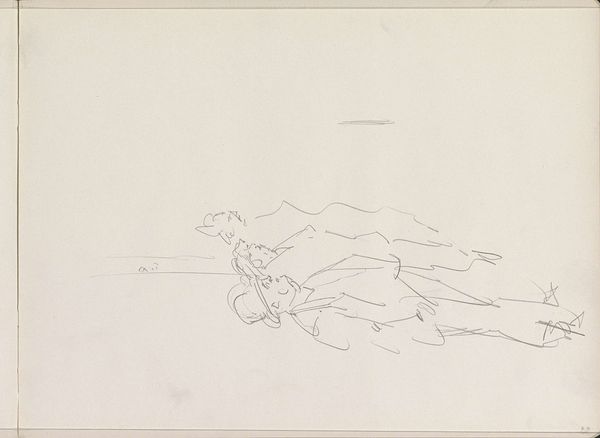
drawing, pencil
#
drawing
#
light pencil work
#
pen sketch
#
pencil sketch
#
incomplete sketchy
#
landscape
#
personal sketchbook
#
idea generation sketch
#
ink drawing experimentation
#
pen-ink sketch
#
pencil
#
sketchbook drawing
#
sketchbook art
#
realism
Copyright: Rijks Museum: Open Domain
Editor: So, this is "Drie mannen, mogelijk bij een kampvuur" – "Three Men, Possibly by a Campfire" – a pencil drawing by George Hendrik Breitner from 1873. It's a very loose sketch; I immediately get a sense of quiet observation, a glimpse into a private moment. What do you see in this piece? Curator: It's fascinating to consider this work through the lens of Breitner's social context. Given the period, and his well-documented interest in depicting everyday life, particularly of the working class, one might ask: who are these men? What is their relationship to each other, and to the landscape? The tent and minimal possessions suggest itinerancy, possibly forced upon them by economic circumstances. Is Breitner, even in this simple sketch, subtly commenting on social disparities? Editor: That's interesting. I was focusing more on the aesthetic quality of the sketch itself, the suggestive lines rather than a clear narrative. I hadn't really thought about it as a commentary on social issues. Curator: But isn't the aesthetic inseparable from the social? Breitner chooses this subject, these figures. He could have sketched a wealthy family in a manicured garden, but he didn't. The very act of representing these men, their implied transience and vulnerability, speaks volumes about the social realities of the time, even if the work remains open to interpretation. Notice how the light seems to isolate them in the vast emptiness. What do you make of that? Editor: I guess I see the isolation, but I hadn't connected it to any political statement. It just felt more… intimate, like capturing a stolen moment. I hadn't considered the potential critique implied in even a seemingly simple sketch. Curator: Exactly! And that’s where the power lies – it's not always overt, but art often operates as a subtle form of social commentary. Considering Breitner's other works focusing on marginalized communities reinforces that perspective here. Editor: I'll definitely look at this differently now, thinking about Breitner’s other subjects and the social climate of the time. Curator: Precisely, that intersection between artistic expression, social observation, and historical context is where we unlock deeper understandings. It adds layers of meaning to what might seem like a fleeting image.
Comments
No comments
Be the first to comment and join the conversation on the ultimate creative platform.
